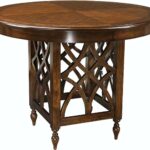First, how to build a wine rack?
Wine racks are easy, enjoyable DIY projects that are great for beginners because they typically don’t cost much and don’t require a lot of woodworking expertise.
We have combed the internet to see what other people have been trying for anyone who wants to try.
Please continue reading for more information.
Table of Contents
Before You Begin
Depending on your needs for wine storage, choose whether to build the smaller countertop wine rack or the larger cellar-style wine rack before you get started. Additionally, consider the extra materials before going to the hardware store if you want to modify the cellar-style wine rack to better fit your space.
Safety Considerations
Both types of wine racks are made to hold wine bottles securely and without toppling. To guarantee that the final product you produce is secure and efficient, carefully follow the directions and the materials list. In order to reduce the risk of tipping, furniture anchors should be used with the cellar-style wine rack.
Tools & Materials
- Drill with ¾” spade drill bit
- Jigsaw
- Circular saw or table saw
- Nail gun
- Rubber mallet
- 1 – ¾” 4×8 sheet of plywood (we used oak)
- Iron-on edge banding
- 1.25” nails
- Wood glue
- Sandpaper (120, 180, 220 grit)
- Painter’s tape
- Stain (we used Minwax Rustic Beige)
Ways To Make A Wine Rack
Cut Plywood To Size
We designed our wine rack to fit inside the DIY bar cabinet we constructed, but you can also place it on a countertop. Regardless, it looks fantastic! But just a warning: it’s heavy, even before you add wine.
Our wine rack was roughly 14.5” wide, 28” high, and 13.25” deep. Using a circular saw, we cut out all of our pieces.
Apply Edge Banding
It’s time to finish the plywood edges on the boards you’ll be able to see once you’ve finished cutting all of your boards.
We only completed the front-facing sides of our wine rack because it would be housed inside a cabinet. If you intend to put your wine rack on display, you might want to finish the sides that will be seen from the back and sides as well. It’s up to you!
Measure And Mark Where To Cut
We taped two pieces together so that we could cut them at the same time because the pieces need to be cut as similarly as possible for a square and snug fit.
Make sure they are perfectly aligned on all sides and securely taped so that they won’t separate during drilling or cutting.
Recall that you only need to mark and cut the vertical boards once if you tape them together. Place the cut boards on top of the non-cut boards and trace where to cut, rather than remeasuring, after measuring and marking the first pair of horizontal shelves.
The three compartments won’t be perfectly even, but because they are so close together, you won’t even notice.
To begin with, measure the shelf halfway and mark it at 6.25″. Then, measure 3 7/8″ from either of the 12.5″ ends of the shelf.
Draw a line 3.78 inches in from the back of the shelf to the center of the shelf (6.25 inches) on both ends.
Then, take your vertical boards or scraps of plywood and align them with your drawn line. To mark the areas you will cut out, trace the plywood’s other side.
It is preferable to use the plywood as a guide for where to mark rather than relying solely on measuring because plywood isn’t exactly ¾” thick.
Five notches will be cut into the plywood for the vertical boards. They will be cut from the front to the middle, so you will cut through the edge banding on these.
The middle is 6.25″; measure it and mark it. Next, measure and mark 3 13/16″ from each side, then draw a line through those marks to the center.
To mark how wide you should make your notches, take one of your shelves.
Next, subtract 3 13/16″ from the lines you just marked. The other side of the notch should be marked with a shelf.
Finally, draw a shelf 3 13/16″ from one of the lines you just marked.
Again, one of the holes will be a tiny bit (1/16″) smaller than the others. They are so minute that you won’t ever notice them.
Since the boards you cut down initially are probably not going to be perfectly accurate, the distances we specify in our measurements might not apply to your specific piece. There is some room for error for unknowable variables like the precise thickness of the plywood thanks to the slight variation in slot sizes that you probably can’t even see.
We need to mark where we’re going to drill after you’ve marked where you’re going to cut.
From the marked 6.25″ center line, measure in ¾”. Locate the area you are cutting’s center next. Make a note of the intersection of those two points. Repeat this for each area you plan to remove.
Drill
Drill through both of your boards from the mark you made in step 3 using your ¾ drill bit. As the drill bit passes through, be sure to keep it nicely straight. If it’s angled, the hole in your second board won’t be where it should be.
Place a scrap piece of wood beneath your boards as you drill through them as a tip. This leftover wood will support the fibers on the opposite side and help to prevent tearout.
Cut Your Slots
To cut out the pieces, adhere to the jigsaw lines that you drew. Try to remain as near your line as you can.
The slot will be too small if you cut inside the line. Your wine rack may have gaps if you cut outside of the line. While neither will bring about the end of the world, a good fit is nice.
It’s important to take care not to exert pressure on the jigsaw blade as you cut out your slots. Allow the blade to do the work, then proceed at the fastest possible jigsaw speed.
Additionally, you want to confirm that you are pressing downward. The blade will angle and cut your second piece very differently than the piece on top if you try to move it too far to the left or right.
Test
Don’t skip this step; it’s crucial. To check that the components of your wine rack fit together smoothly and are properly aligned, you should quickly perform a dry fit.
Your vertical and horizontal boards should be placed close enough to each other to determine whether they will fit together completely. You don’t need to hit them fully into place because they should fit together fairly snugly.
You can use your jigsaw to make the notches wider or deeper if necessary. You can proceed to the next stage as soon as everything appears to fit together.
Sand
Sand the wood until it is smooth and free of any jigsaw splinters.
Since we used plywood, take care not to sand for too long lest you remove the attractive veneer and expose the undesirable layers beneath.
Stain + Seal
We used Minwax Rustic Beige stain to stain this wine rack, and Minwax Soft Touch Finishing Wax to seal it.
Assemble The Wine Rack
The wine rack isn’t particularly difficult to put together, but it may require some labor.
The vertical boards will be placed on top of the horizontal shelves, and they will be hammered down until flush with a mallet.
Attach The Sides, Top, And Bottom
The sides, top, and bottom can be installed after the main structure is put together. It’s a little bit more difficult and precise to do this.
The wood rack’s sides, which you assembled in step 9, should have some wood glue applied to them. After that, place one side on the wine rack, aligning it with the front, back, and top of the rack. By ¾, the back should protrude.
To secure it, delicately fasten the sides to the horizontal shelves. To avoid shooting through the sides of the wine rack, aim your nail gun straight.
Continue with the opposite side, then the bottom and top. Again, the top and bottom should coincide with the front, sides, and back of the wine rack, with a frac34; overhang in the back.
Attach The Back
Hopefully, the back is snug and comfortable. Perhaps you’ll need to tap it into place with your rubber mallet.
To secure it to the wine rack once you have it in position, drive a few nails through the back. Just make sure to double-check your measurements to avoid driving nails into the shelf instead of the back of the piece.
Install Or Display Your Finished Wine Rack
You can use your wine rack as long as it is only being displayed on a countertop.
You should skip installing the top and bottom if you’re making this wine rack to fit in our plans for a DIY bar cabinet. Instead, do the following to install inside the bar cabinet:
In the bar cabinet, first insert the bottom of the wine rack and fasten it with nails.
Then, while you slide the wine rack into the cabinet, have someone hold the top of the wine rack.
Note that I couldn’t be holding the top in place to take the photo. If the top is not being supported, the drawer slides will prevent it from fitting.
The top can then be lowered onto the wine rack and secured with nails.
You now understand how to construct your own wine rack from plywood.

Ways To Modify A Cellar-style Rack
The cellar-style rack is easily adaptable to any space, even extending from floor to ceiling to create the appearance of a real wine cellar. Increase the height of the ladders by simply extending more across. Add a support piece along the back for every 12 to 18 inches of height that is added. Additionally, the more anchoring it requires to be secure the larger it is made to be.
The End
Wine racks are not only useful furnishings but also beautiful and fashionable accents that can add an extra touch of class to any room. They are also simple DIY projects that anyone can attempt.
Above all, we hope we’ve helped you find the inspiration you needed for your next DIY project. We hope you’ve enjoyed reading these plans as much as we’ve enjoyed finding them for you.













